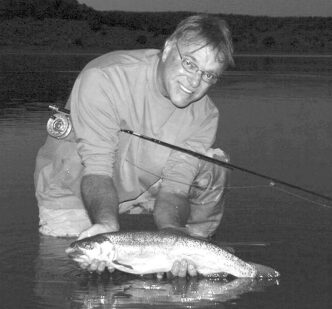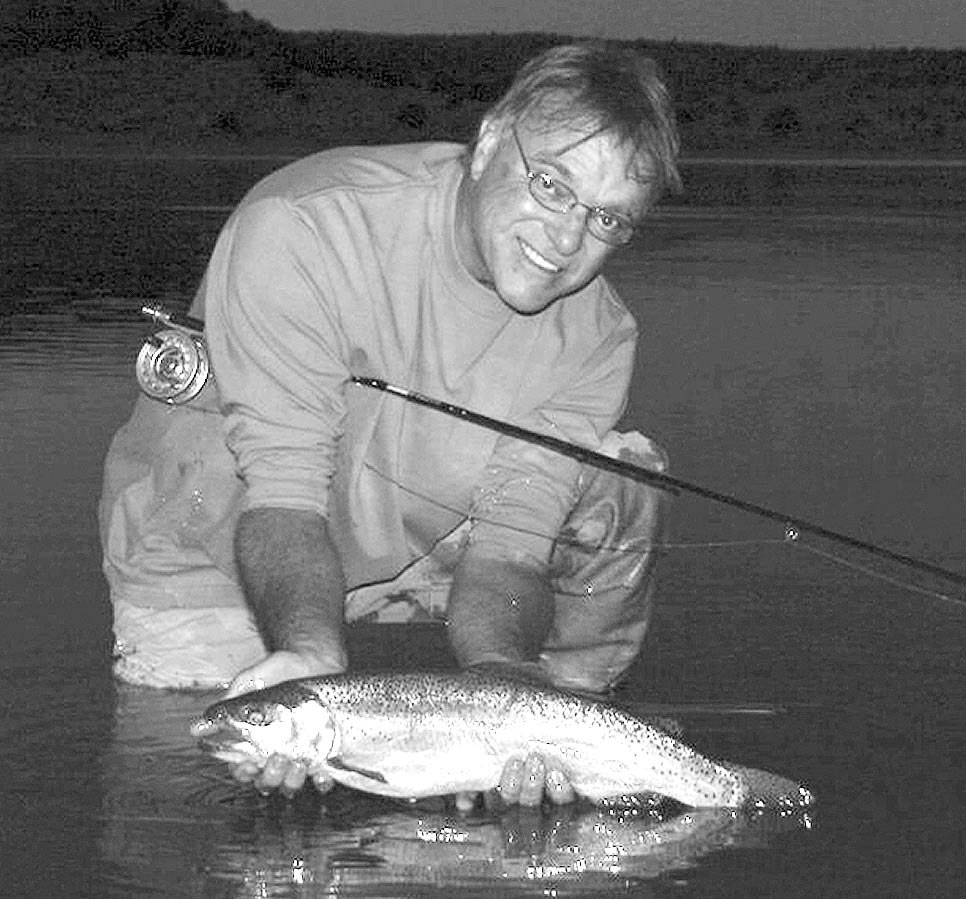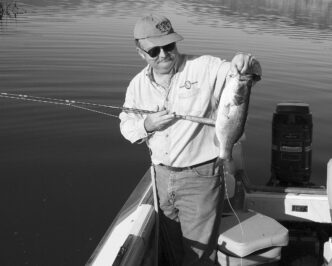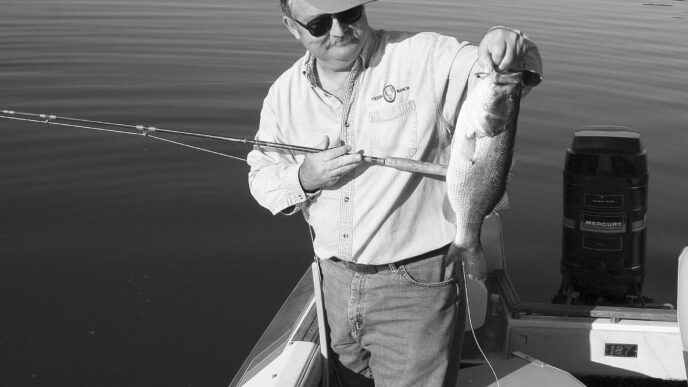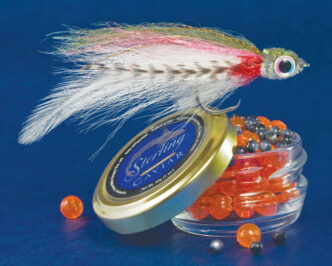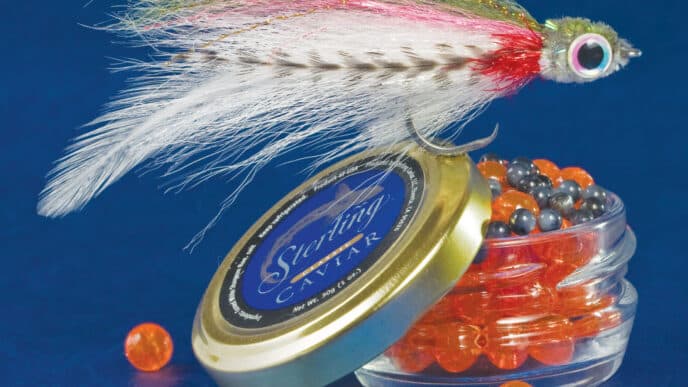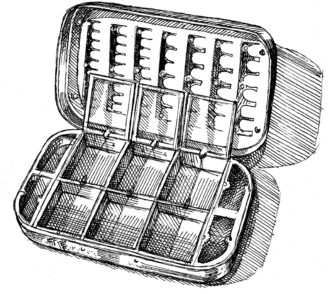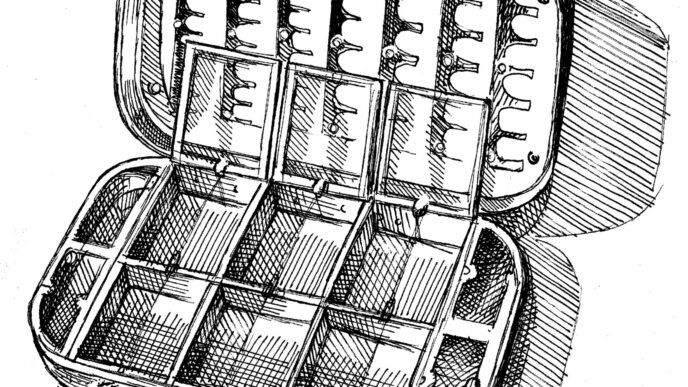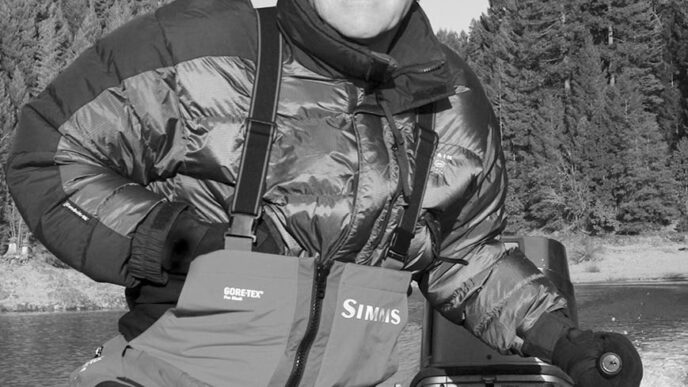The darkest dark there is, is in a cave. Cave dark sucks the light from your headlamp. It isn’t merely an absence of light, but a tangible presence, almost like fog. In a cave, with the lights turned off, you can hear your heart thumping and feel the pulse of blood in your ears. I’m certain the sounds of your heart and pumping blood are always present, but when the visual portion of the brain is stimulated, it overwhelms the other, more subtle perceptions. In the dark, you become one with a deeper reality.
One of the deeper realities of fishing in the dark is that you can’t see jack. Sure, you can imagine how hard it might be to tie knots or how easy it might be to catch your back cast on an unseen branch when fishing at night, but even the mere act of casting is turned upside down. The visual cue of when to make your forward stroke or the placement of your fly somewhere relatively close to the sound of a rise is gone, and you can get frustrated pretty quickly.
Fishing under a moonlit or even a starlit sky works fine, and the fishing can be excellent, but I truly believe the darker, the better. Fishing under cloud cover or in a light rain is good. When it becomes so dark that you want to claw the blackness out of your eyes, then it is dark enough. This is when the largest fish are emboldened to leave deep cover and prowl the shallows, with their tails and dorsal fins waving through the film. They aren’t just swimming around. They are actively hunting for food, and your job is to feed them. Trout can see better in very dim light than we can, but by far their more important sense at night is the perception of pressure. The lateral lines along the flanks of the fish are pocked with tiny sensors linked to a common nerve bundle. These receptors are most dense and sensitive near the head. As the pressure waves from a swimming vole reach the trout and roll past its body, the strongest push will be on the side from which the vole is swimming. As the trout turns to face the unseen rodent, the pressure will equalize against both lateral lines, and the fish will home in and move directly toward the source.
Scientists (and anglers) have widely held that hearing plays a key role in prey and threat location, but a study published in the current issue of The Journal of Experimental Biology upends that belief. Through a complex series of tests in which fish were systematically fitted with custom eye caps to blind them, the lateral lines were inactivated with cobalt chloride, and various other mutilations were performed, a team of scientists convincingly showed that hearing plays no role in prey location or threat evasion. Sound waves move so quickly through water that they hit both ears at virtually the same time and are essentially useless input. It even appears that the tissue in the ears of fish is transparent to sound. The takeaway? You no longer need to whisper while fishing.
Since night-feeding fish hunt by sensing the pressure waves given off by prey, your fly should likewise make waves. While fishing caves in Borneo, I could drift a Stimulator an inch over the heads of blind catfish and they wouldn’t move. On the other hand, the same fly given a subtle twitch would invoke a viscous strike and usually a rush from other catfish deep in the pool. Drag-free drifts are a nonstarter when angling for fish who can’t see.
Rehearsing for your first dead-of-night fishing experience is highly recommended. After making sure the angling regulations allow angling after sunset, visit the place you plan to fish during daytime. Remember where the trip roots and drop-offs are. Remember the snags, barbed wire fences, and ornery bulls. Memorize the major current seams and eddies. Close your eyes and start fishing.
Pretty hard, huh? Just wait.
Arrive at your location early enough so that you can get situated before it gets really dark. Use heavy tippet — 10-poundtest, minimum. As I said earlier, a drag free drift is not your goal, and trout are not leader shy when charging a mouse or streamer at night. Heavy monofilament not only gives you an edge when tussling with big fish, but is nice for pulling flies out of snags. At night, you will likely hook lots of unseen stuff you would easily avoid during the day. The best reason for using heavy tippet is that it doesn’t wrap around limbs and branches nearly as easily as thin, limp leader material.
Clip a mouse or unweighted, water-pushing baitfish imitation to your leader on a floating line. Tying knots at night is a pain, and securing your flies to the leader with a small snap swivel is both convenient and kosher in my book. Fishing a weighted fly or sinking line is not only asking for a frustrating session, but will likely limit your success. Trout that hunt under the cover of darkness are more frequently than not in shallow water.
Find a place where your back casts will be clear of any vegetation, fence posts, and other obstructions. I can’t think of a better place to start night fishing than where a tributary enters a lake. Large lake dwelling trout will push into amazingly shallow creeks in search of food at night. In the fall or winter, when lake levels are low, an ideal spot is to work from the dried lake shore, cast into a tributary stream, and allow the fly to swing across and with the current into the lake. Of course, a boat or float tube just offshore is perfect. It goes without saying that a lifejacket is mandatory when fishing from a boat or wading deep waters in the dark.
Long, slow strips generally work better when fishing rodent patterns than do short, choppy ones. Even a terrified mouse swims pretty smoothly. With subsurface patterns, I like a strip-and-pause retrieve. Like a mouse retrieve, don’t overdo it with hard tugs — subtle is better. In shallow water, splashy or noisy retrieves can spook, rather than entice trout.
When you absolutely need a light, use a headlamp or small LED flashlight with a red lens or filter to protect your night vision. Before snapping on the light, turn you back to the water and, if possible, get low or even sit down. Any light hitting the water from 10 degrees or less will reflect off the sur-face, rather than penetrate and possibly alert fish.
Glow-in-the-dark Bobicators make a pretty cool platform from which to suspend a big, puffy Woolly Bugger or Zoo Cougar. Make a single long strip, then pause. Your fly will make a vertical ascent, then drop straight down below the bobber. This jigging retrieve can be deadly. To activate the Bobicator’s phosphorescence, wrap both it and your camera in a jacket (to hide the light) and fire the flash. One or two flashes is better than ten minutes spent holding the bobber under a penlight.
Night fishing is addictive. The smells are rich, the sounds amplified and often mysterious. There is an edginess to it. No matter how many times an unseen beaver slaps his tail right behind you, you’ll jump out of your waders and head to shallow water. Of course the grabs are bitchin’. The fish sound louder and feel bigger than anything during the day. Sometimes that’s because your senses are on high, and sometimes it is because the fish actually are bigger than anything you could catch under the sun.



